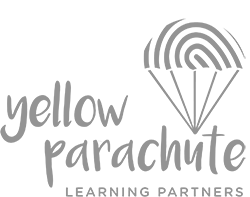A lot of people ask why we at Yellow Parachute talk so much about self-doubt. If our intentions are to inspire, then why focus on anything else? My answer is simple: We can’t talk about how to succeed without talking about what gets in the way.
Let me explain. There is no shortage of information on how to succeed. Log onto a computer and you’ll find a deluge of advice from parenting to mental and physical health to compassion— you name it. All of this accessible via smartphone. And yet we observe confidence falling and anxiety and depression rising across the board— especially in our teens. We wouldn’t see this trend if thriving meant simply knowing what to do or how to do it.
But it’s more complicated than just getting the right information. Thriving requires a lot of self-knowledge, including familiarizing ourselves with the things that block our path.
There is hope… By paying attention to things like self-doubt that get in the way of our success, we begin to take control of our story. We begin the journey of rising above whatever is in our way. This is how we can all become Phoenixes—resilient and open to connecting with others. And this is the best gift we can give to be seen as we are.
Let’s turn to the school experience. Did you know that 85% of the people Brené Brown interviewed in her research on shame could remember a shaming incident at school that was so devastating that it forever changed how they thought of themselves as learners?
Shame is clearly something that gets in the way. At ages ripe for discovery and growth, many students experience shame that causes them to give up before they even try.
So what are the biggest shame-causing culprits? Student to teacher ratio, large classroom groupthink, and a focus on test scores are three components that make the so-called shame gremlins so devastating to both students and teachers. It’s this atmosphere that causes students to begin doubting themselves. Here are just some of the many thoughts we frequently find in students:
•What will people think?
•You’re not ____ enough.
•No one can find out about …
•I’m going to pretend that everything is OK.
•I can change to fit in if I have to.
•Who do you think you are to put your thoughts/beliefs/art/ideas out into the world?
These destructive but catchy thoughts interfere with the school experience. They interfere daily with peer to peer and teacher to student interactions, causing feelings of isolation. Good intentions are misunderstood, leaving both teachers and students less inspired. Each side of the student/teacher equation craving more effort and understanding from the other.
And so, both teachers and students grow defensive. Students build up their armor to protect themselves from feeling stupid, naive, or isolated. We fear we’ll be defined by a single experience that is only a sliver of who we are instead of something more holistic. We retreat to a place inside ourselves and refuse to let them see who we really are. Armored up and isolated, our mantra becomes “if only they would get it.”
I think we all know that it doesn’t have to be this way. But we don’t know how to change it.
I do: start with the students – the true agents of change in the personalized learning revolution.
These humans are hungry to be understood, thirsty for knowledge, and crave justice and connection. Teach teens mindfulness, stress recognition, how to have hard conversations, how to figure out the best way for each to learn, and how to self-advocate. Dive into the diversity of possibilities for expression the classroom experience can offer.
When we teach systems-thinking, executive function skills, personal values, and self-advocacy, we give students the know-how to truly use their voice as agents of choice. And to have compassion for others. They can reach out instead of armoring up. They can integrate knowledge of how they need to access, work with, and express what they’re learning. And help others do the same.
Research shows that teen brains are wired for caring more what their peers think than teachers think. Let’s point this out and use it as a strength to show them how to help one another.
At Yellow Parachute, we teach students to learn how to learn. And we want this shift in learning for all students. Then each can take a stake in the educational experience to make it her own. And teachers can remain content experts and facilitators rather than creating 15 different possibilities for a lesson or project. Let the kids do the exploration, once they know the boundary lines.
YP has developed a curriculum in pursuit of this goal. Each of our YP Students experiences the power of personalized learning, and we envision the lessons appearing in classrooms too. This change that begins with students and ripples outward is happening now.
Join us in the revolution.
—Cara







